This blog is based on a keynote delivered by Vignesh Kumar, AI Engineering Manager at Ford, during the Data Hack Summit 2025. His session, titled “Automating Vehicle Inspections with Multimodal AI”, explored how AI (artificial intelligence) is transforming the car servicing industry. It highlighted the scale of the challenge, the architecture of multimodal AI solutions, and the measurable business impact of deploying them at scale. What follows is a detailed exploration of that vision and its implications for the industry.
Industry Context
The car service world is no longer what it was a decade ago. Inspections used to be mechanical, manual, and heavily dependent on the eye of the technician. That era is fading. Customers today expect speed, clarity, and proof. They want to see what is wrong with their vehicle and why it needs fixing.
This is where electronic Vehicle Health Checks, or eVHCs, have become the industry’s answer. A short video of the car can highlight issues better than a sheet of paper ever could. It gives technicians a way to document problems. More importantly, it builds trust. When a customer can see worn brake pads or hear unusual noise, they no longer feel they are being sold repairs they do not need.
The shift to eVHCs has made transparency a competitive edge. But it has also created new challenges.
The Challenge of Scale
The adoption of video inspections has exploded. In 2024 alone, technicians produced 12.9 million service videos. With the help of platforms like CitNOW, that figure has already reached 80 million in a short span. The bigger picture is even more staggering: the global automotive repair and maintenance services market is projected to hit $1.91 trillion by 2032, with a 9.8% CAGR
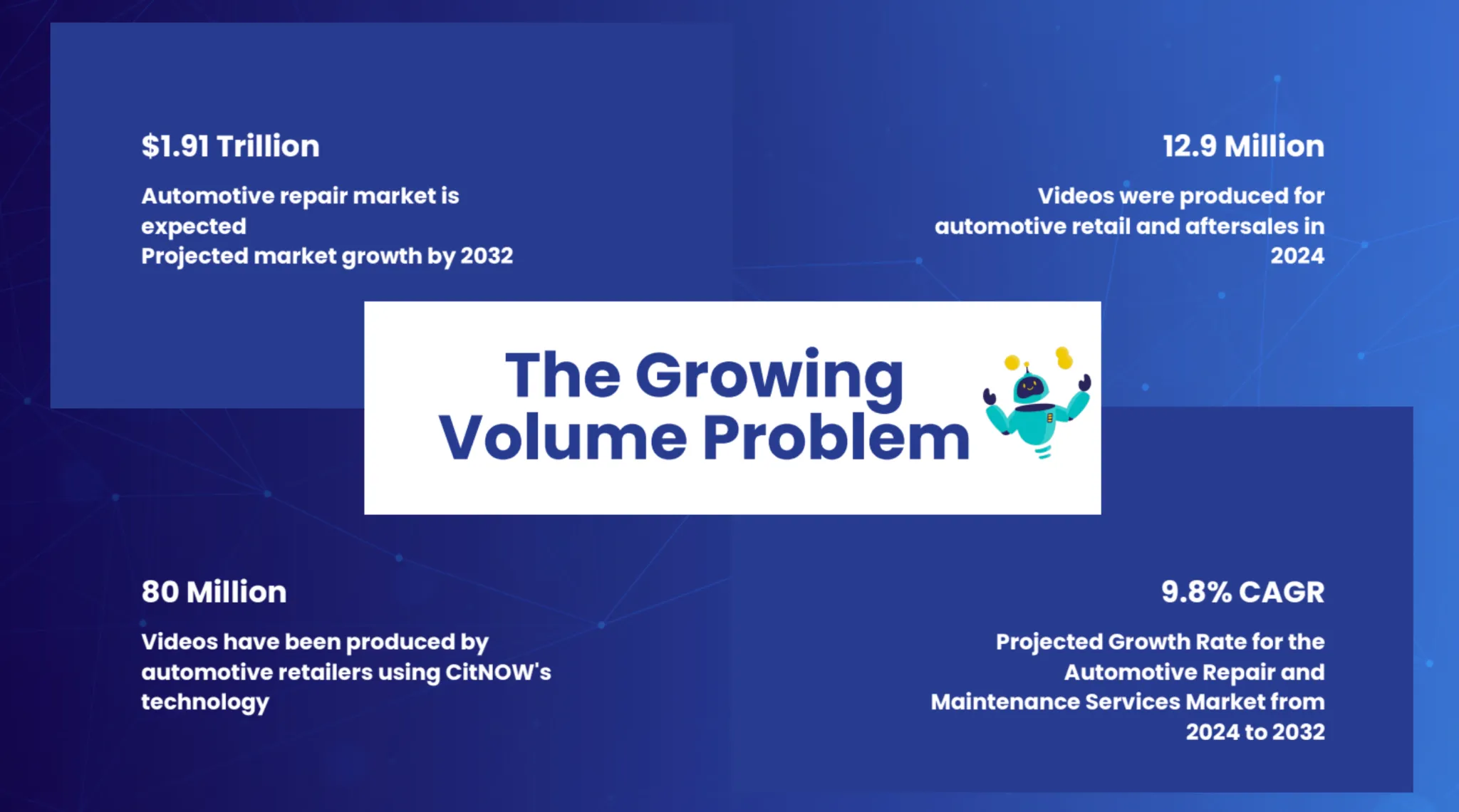
But the surge in video data has a catch. Reviewing these videos manually is slow and inconsistent. Even the most skilled technicians cannot maintain the same level of detail when watching hundreds of clips daily. Turnaround times stretch. Costs rise. Customers wait longer. Ultimately, the customer trust weakens as and when quality wavers.
This is why automating vehicle inspection for car servicing with AI is the only way to match the pace of growth. AI can handle millions of hours of footage, assess clarity, extract insights, and deliver consistent results. And this is where multimodal AI jumps in.
Technical Foundations of Multimodal AI
The task of automating vehicle inspection for car servicing with AI is not as simple as pointing a camera and letting software run. The process demands intelligence across multiple data streams: video, audio, and text. This is where multimodal AI makes a difference.
At its core, the system follows a cloud-based workflow. A video is ingested, transformed, and then processed to generate structured outputs. Each step is designed to ensure nothing is lost in translation. A three-hour inspection video can be broken down into tokens – 66 tokens per frame for visual data, coupled with audio diarisation and language translation across 80+ tongues. The result is a time-ordered sequence that AI can analyse with precision.
Prompt engineering sits at the heart of this architecture. The AI is not just asked to “analyse a video.” Instead, it is guided through a chain-of-thought reasoning process, role-based instructions, and conditional logic. The prompts are strict, sometimes demanding responses in structured JSON format. This rigidity ensures that the AI does not wander off script but produces consistent and verifiable results.
To safeguard quality, gatekeeper logic is applied early on. Before analysis begins, the system checks if the video is clear, if the car is visible, if the brand logo appears, and whether audio is present. Only then does the deeper inspection run. If any condition fails, the pipeline halts and generates a standardised response. This prevents wasted effort and keeps the workflow clean.
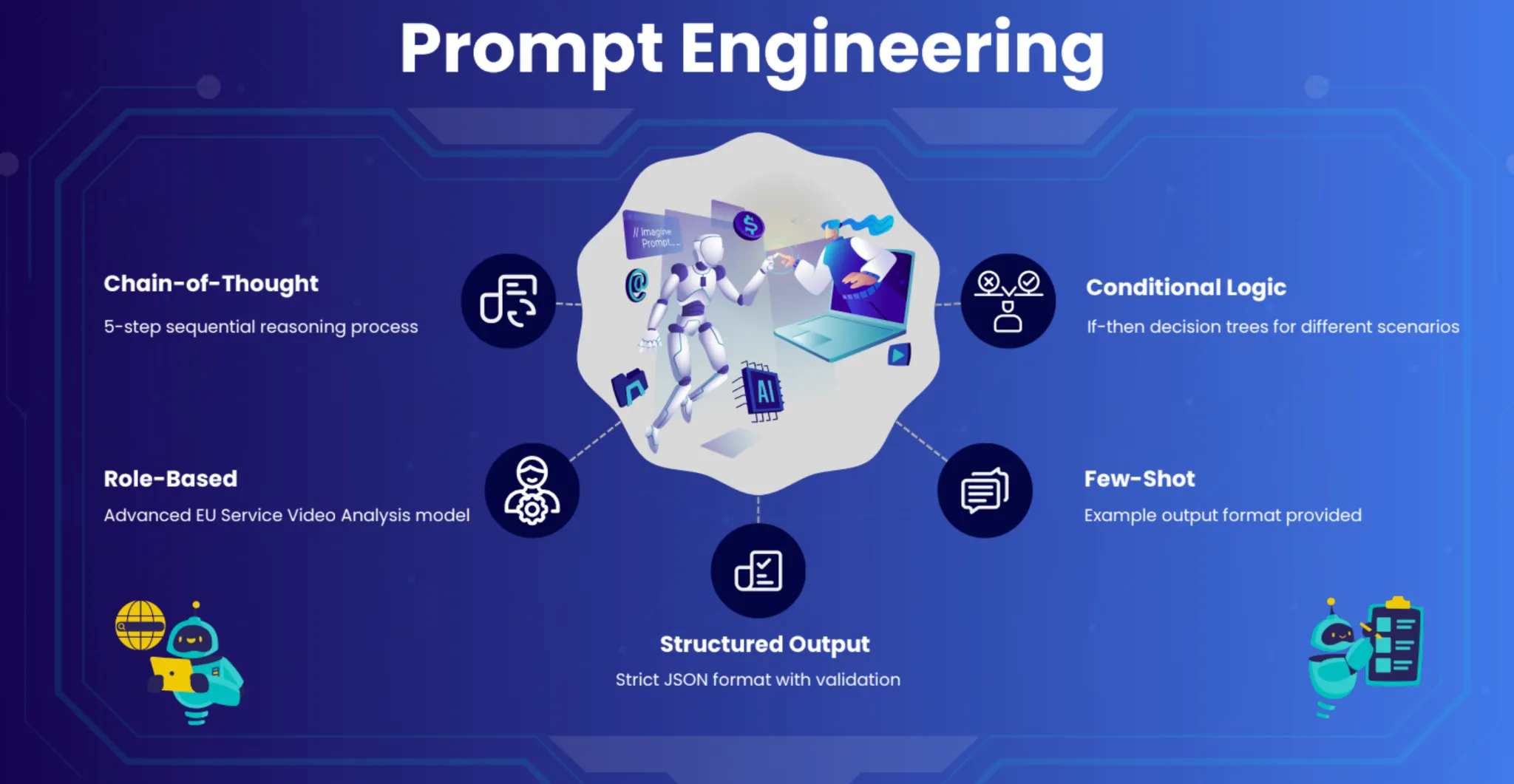
This layered design is why automating vehicle inspection with AI works wonders in practice. It does not rely on blind automation. It mirrors the structured, conditional way humans think, only at far greater speed and scale.
How the System Works in Practice
Automating vehicle inspection for car servicing with AI is a working pipeline that mirrors the way technicians think, but at scale.
The process begins with vehicle identification. The system confirms what car is being inspected. It checks for logos, number plates, and visible details to validate authenticity. Next comes audio presence verification. If the video has no sound, the inspection halts. Clear audio is crucial because technicians often explain faults while recording.
The AI also runs a clarity check. If the video is blurry or poorly lit, the system flags it as unusable. This prevents false results from creeping into reports. Only when these gatekeeper checks are passed does the deeper analysis begin.
The heart of the pipeline is brand classification and scoring. The system distinguishes between passenger and commercial vehicles. It then runs compliance checks against service protocols. Each inspection is scored on a 0-100 scale, capturing quality, completeness, and diagnostic accuracy. The results are precise and standardised, as the same car inspected in different locations will yield identical outputs.
To add to the effectiveness of the entire process, the entire video inspection is carried out with multilingual capability. With built-in transcription and translation, the AI can process commentary in over 80 languages. This ensures that service centres across geographies can maintain the same standards without barriers of language.
The final output is clean, structured, and ready for integration. It can be stored in a central database, sent as a customer-facing report, or fed into downstream workflows. The difference is immediate: what once took hours can now be done in minutes, with no compromise in quality.
Quantifiable Business Impact
The real measure of any AI solution lies in its outcomes. For automating vehicle inspection for car servicing with AI, the results are striking.
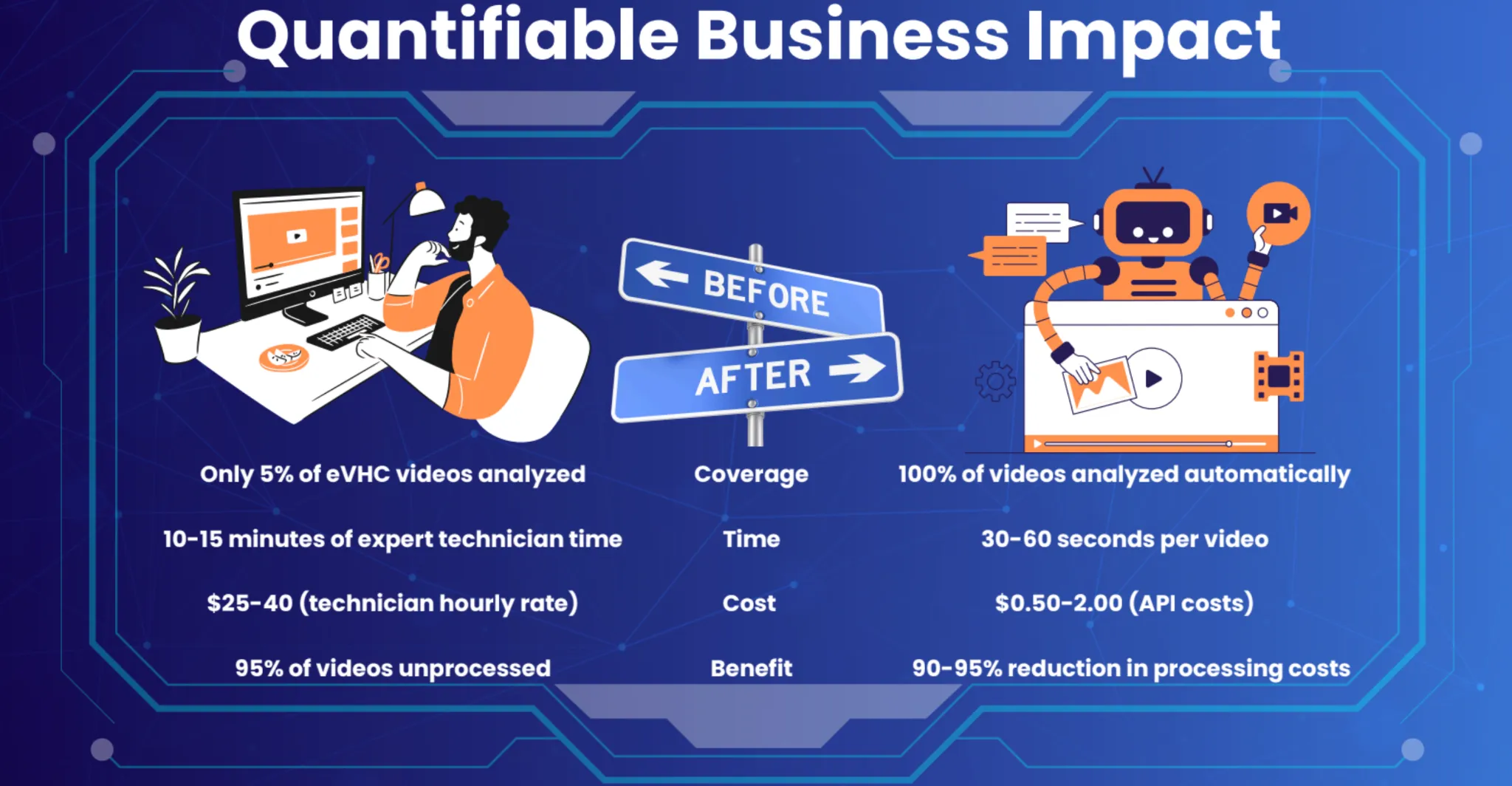
Processing speed is the most visible gain. What once required hours of manual review is now 20 times faster. As per the data shared by Vignesh in his speech, each service location can save nearly 70 to 80 hours a month using such AI automation. That time can then be channelled back into customer engagement and core technical work rather than repetitive video checks.
Consistency is another major advantage. Human reviews are prone to fatigue and error. AI pipelines do not tire. They maintain a uniform standard across dealerships, regions, and even countries. This is critical in an industry where brand trust depends on consistent service.
The customer impact is clear in numbers. Service centres using the system have recorded an 8.9-point improvement in Net Promoter Score (NPS). Each visit also generates 15% more value for the business. These are not abstract gains. They translate into higher customer satisfaction, repeat visits, and stronger lifetime value.
Scalability adds a third layer of impact. Traditional inspection models require exponential hiring to meet demand. AI, in contrast, scales linearly with costs. Whether it is one hundred or one million videos, the pipeline processes them at the same standard, 24/7.
Even softer benefits matter. Faster inspections and transparent reports reduce disputes, as customers trust what they see. They return with confidence that their vehicle is in safe hands. In an industry driven by trust, this is perhaps the most lasting gain.
Automating vehicle inspection with AI is more than just about efficiency. It is about creating measurable, repeatable outcomes that strengthen both the business and the customer relationship.
Lessons from Prompt Design
The engine driving automated vehicle inspection for car servicing with AI is not just the model, but the prompt architecture behind it. This is where Vignesh Kumar’s keynote revealed insights that go beyond cars and touch the core of AI practice.
The system does not rely on one generic prompt. It uses a five-step chain-of-thought design. Each step defines the role of the AI, the conditions it must check, the structured output it must generate, and the error handling it must follow. This creates a framework where responses are predictable, consistent, and verifiable.
Conditional logic plays a crucial role. A failed video check does not derail the system. Instead, the prompt redirects the model to produce a standardised fallback response. This branching structure mimics how humans handle exceptions: if one rule breaks, another takes over. This helps build resilience at scale.
Another innovation is non-linear prompt design. Instead of simply feeding data and waiting for results, the pipeline defines the desired output first. Only then does it layer in the conditions and rules that must be met. This approach gives the model a clear destination before it starts processing. It ensures that even when analysis is complex, the outputs remain aligned with expectations.
Priority markers within prompts also help. For example, placing one or two asterisks before a keyword signals higher importance. This subtle cue shifts the model’s attention and improves reliability in complex evaluations.
These prompt strategies turn AI from a black box into a disciplined decision-maker. They show that the success of automating vehicle inspection with AI does not come from raw computational power alone. It comes from careful design that blends logic, control, and flexibility.
Demo of eVHC in Action
The keynote also showcased a working demo of an AI-powered Electronic Vehicle Health Check (eVHC). The project, built on Google Vertex AI’s gemini-2.5-pro, demonstrates how inspection videos can be analysed end-to-end without manual intervention.
Key Features
- AI-Powered Analysis: Automatic inspection of vehicle videos, object detection, and condition checks
- Streamlined Insights: Generates structured summaries, diagnostic notes, and inspection scores
- Scalable Automation: Processes large volumes of videos quickly and reliably
Core Capabilities
- Video Management: URL extraction, downloading, and classification
- Content Analysis: Object recognition, condition assessment, and speech-to-text transcription
- Data Handling: Validation, storage in Google BigQuery, and integration with Cloud Storage
- Error Handling: Logging and standardised fallback responses
Tech Stack
- Google Vertex AI (gemini-2.5-pro)
- Google BigQuery & Cloud Storage
- FastAPI (Backend) + React/Vite (Frontend)
- Docker for containerisation
This demo brings to life what automating vehicle inspection with AI means in practice. It shows that an inspection pipeline can be built, scaled, and deployed with open tools and cloud infrastructure.
Full source code, documentation, and demo access are available on the GitHub repository here.
Future Outlook
Automating vehicle inspection for car servicing with AI is still at an early stage, but the direction is clear. As inspection data multiplies, AI will not just support technicians; it will redefine their role.
One obvious path is global standardisation. Dealerships across regions will no longer depend on local practices or subjective judgments. An inspection video shot in Delhi can be evaluated by the same rules as one shot in Detroit. Consistency becomes a global asset instead of a local challenge.
Another future step lies in integration with broader mobility ecosystems. Inspection results can link directly with warranty claims, insurance processes, and predictive maintenance models. A video captured during a routine service could automatically update the digital twin of the vehicle, ensuring that every stakeholder, from insurers to OEMs, works from the same truth.
There is also scope for real-time analysis. Instead of waiting for post-service review, AI could guide technicians as they record. Prompts might signal if a car part is not clearly visible or if additional footage is needed. This transforms inspections from a one-way documentation process into an interactive loop that further raises accuracy.
Finally, the long-term outlook includes cross-domain adoption. The same multimodal AI architecture can be applied in aviation maintenance, heavy machinery servicing, or even medical imaging. Anywhere complex systems require visual inspection, the lessons from automating vehicle inspection with AI can carry over.
The challenge ahead will not be technical alone. It will be about shaping responsible AI practices, ensuring that automation enhances human judgment rather than replacing it blindly. The automotive industry has a chance to lead here and to show how AI can bring trust, speed, and consistency to services that affect millions.
Conclusion
The keynote at Data Hack Summit 2025 made one thing clear: automating vehicle inspection for car servicing with AI is not a distant idea. It is already transforming how service centres operate, how customers experience trust, and how businesses measure outcomes.
The combination of multimodal analysis, structured prompt design, and quality gatekeeping has created a pipeline that works at scale. It handles millions of hours of video with consistency. It delivers insights in minutes, not days. And it does so while saving costs, boosting revenue, and strengthening customer satisfaction.
For an industry long criticised for opacity and inefficiency, this is a turning point. Inspection is no longer a bottleneck but a lever of trust. When a customer can see the same transparent report in any dealership, across any language, they know the process is fair. That is the kind of shift that shapes reputations.
Looking forward, the challenge is to shape this future responsibly. AI cannot be allowed to replace human judgment without accountability. But as a tool for transparency, consistency, and efficiency, it is unmatched. The automotive world now has a chance to set the standard not only for its own sector, but for every industry that relies on visual inspection at scale.
Automating vehicle inspection with AI is not just a technical achievement. It is a cultural one. It shows how machines and humans, working together, can deliver more than either could alone. And it signals the road ahead, where trust, speed, and intelligence drive every service interaction.
Login to continue reading and enjoy expert-curated content.
Source link

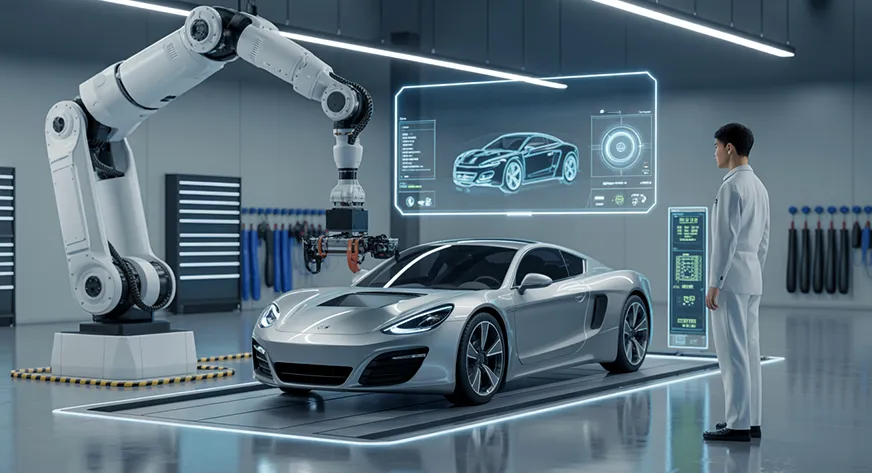


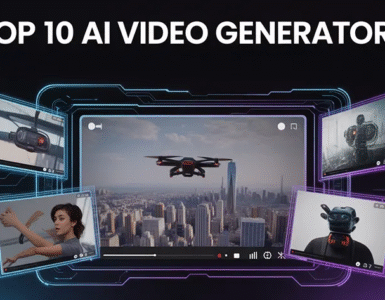
































Add comment